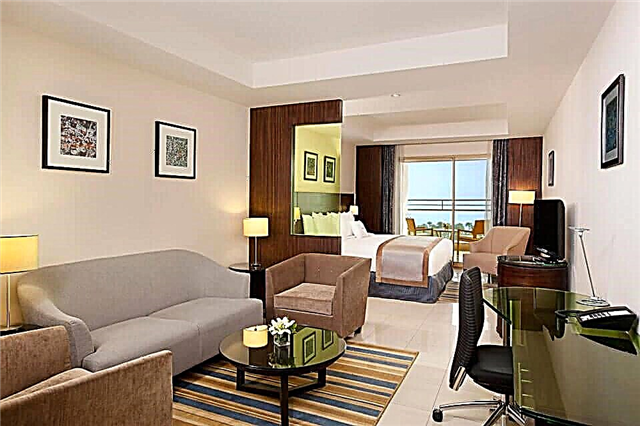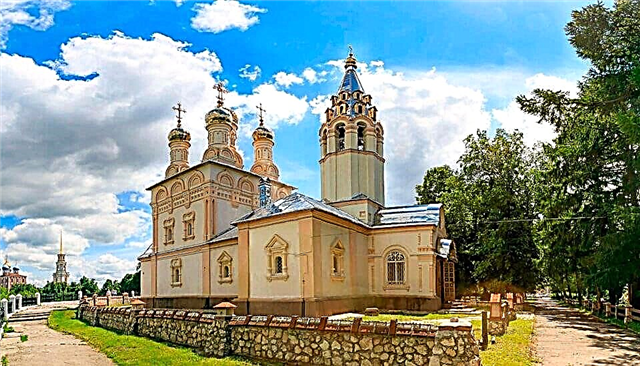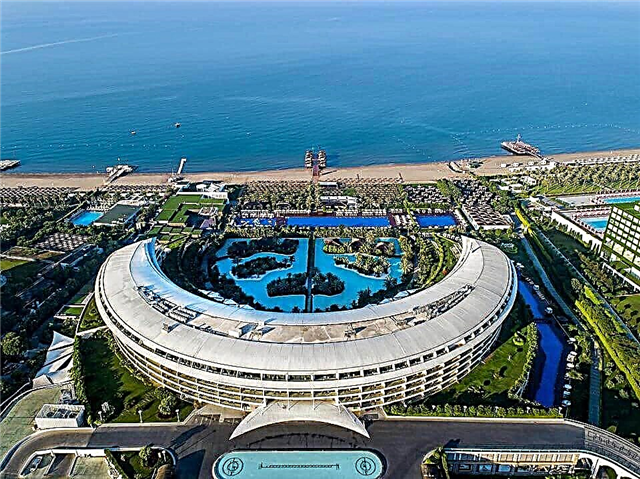40 km from the city of Vladimir, in the village of Muromtsevo, there is an abandoned castle with huge Gothic towers.
Short story
The land on which the castle stands has belonged to the old noble family of the Khonenevs since the 17th century. Their ancestors have settled in these places since ancient times: a certain Rakhman Khonenev, who lived in Vladimir in 1570, was listed in the list of noblemen and boyar children "with a local salary."

The main building of the Khrapovitsky estate from a bird's eye view
At the beginning of the 19th century, the village of Muromtsevo passed into the possession of the Privy Councilor and Governor of the St. Petersburg Governorate - I. S. Khrapovitsky in connection with his marriage to E. A. Khoneneva. The Khrapovitskys themselves came from the Polish-Belarusian aristocracy, which took Russian citizenship in the 17th century, after the liberation of Russia from the Polish-Lithuanian Commonwealth.
In 1884 he inherited the estate in the village. The grandson of I. Khrapovitsky, hussar colonel Vladimir Semyonovich Khrapovitsky, joined Muromtsevo. The abandoned estate and the surrounding forests suggest Khrapovitsky to start selling timber. With the rank of colonel, the young heir retires and hires the best foresters. For reforestation Khrapovitsky is awarded a silver medal from the Ministry of Agriculture.

The main building of the manor
Thanks to his entrepreneurial talent, in the first two years the timber merchant achieved a net profit from the sale of timber in the amount of 80,000 rubles. Having amassed capital, V. Khrapovitsky decided to build a luxurious palace and castle ensemble instead of a dilapidated manor house.
He commissioned the design of the estate to the famous architect Pyotr Boytsov, who specialized in creating estates in the neo-Gothic style. In 1884 - 1889 Boytsov erected a manor house in Muromtsevo in the spirit of medieval castles, surrounding it with a cascade of ponds and outbuildings - hunting lodges, barnyard premises, a coach house, etc.... In 1895, Vladimir Semyonovich became the founder of the Khrapovitsky Timber Warehouses Joint Stock Company. The timber merchant's income was so high that for the transportation of timber, he brought his own railway line to the estate, overgrown with the necessary infrastructure.

The western part of the main building of the estate with a central entrance in the middle
The building of the Khrapovitskaya railway station, the house of the station superintendent, post office, telegraph office, school, shop and bathhouse appeared here. In 1906, another wing with a massive tower was added to the manor house, which organically fit into the original Gothic design.
The former splendor of the Khrapovitsky castle - interiors and gardens
Khrapovitsky's project for the improvement of the estate was implemented taking into account all the technical achievements of that time: the castle was equipped with water supply and sewerage, its own telegraph station, central heating was carried out, all buildings and the park were lit with electricityand palm and box trees grew in greenhouses. The manor buildings were located on the territory of a huge 40 hectare park, created by the designer Fritz Encke and the botanist Eduard Regel.

In the shade of fir, cypress and pine trees, there were playgrounds for sports games. Curved alleys were decorated with magnificent statues, and along the paths there was fashionable garden furniture - chairs and benches purchased from the Vienna Brothers Tonet factory. Khrapovitsky ordered all decor items for manor interiors exclusively from tsarist suppliers. The marble for the stairs was supplied by Gubonin, the furniture was supplied by the famous manufacturer Schmit. Statues, weapons, porcelain and Sevres vases were purchased from Ivan Ebert.
With the permission of the local diocese, Khrapovitsky erected a manor church not far from the house, consecrated in 1899 in the name of the holy martyr Queen Alexandra. By order of the landowner, the masters of the school V.M. Vasnetsov made icons and decorated the church with wall paintings.

The southern part of the main building of the manor was added in 1906
Tradition says that the idea of a stylized medieval estate at Khrapovitsky did not arise by chance. Traveling through France in the 1880s, Vladimir Semyonovich was fascinated by the beauty of ancient castles. In response to a French official's remark that Of Russia there is nothing of the kind, Khrapovitsky made a bet that he would build his own castle. A little away from the manor house, Vladimir Semyonovich erected a cattle yard, which, according to legend, resembled a miniature copy of the castle of a Frenchman who had hurt the pride of Khrapovitsky. When the French offender arrives in Muromtsevo, Khrapovitsky takes him to the farmyard. Having listened to the enthusiasm of a foreign guest who took the stables building for a castle, our landowner laughed in response: “Thank you! But my horses live here, and my estate is a little further. "

The current state of the Khrapovitsky estate
Khrapovitsky could not foresee the revolution of 1917, but having a practical mind, he handed over the estate to the state in order to save it from plunder. Material values and picturesque canvases entered the funds of the Vladimir museums, and after the Khrapovitskys emigrated to France, the castle was nevertheless destroyed and plundered. Not a trace has remained of the luxurious interiors. Only ruins have survived from most of the manor buildings. The fate of the owner of the castle is no less tragic - in 1928 V. Khrapovitsky died in a nursing home in the French city of Menton... It is sad to see how the castle is being destroyed, but such is the fate of many monuments in Russia.











